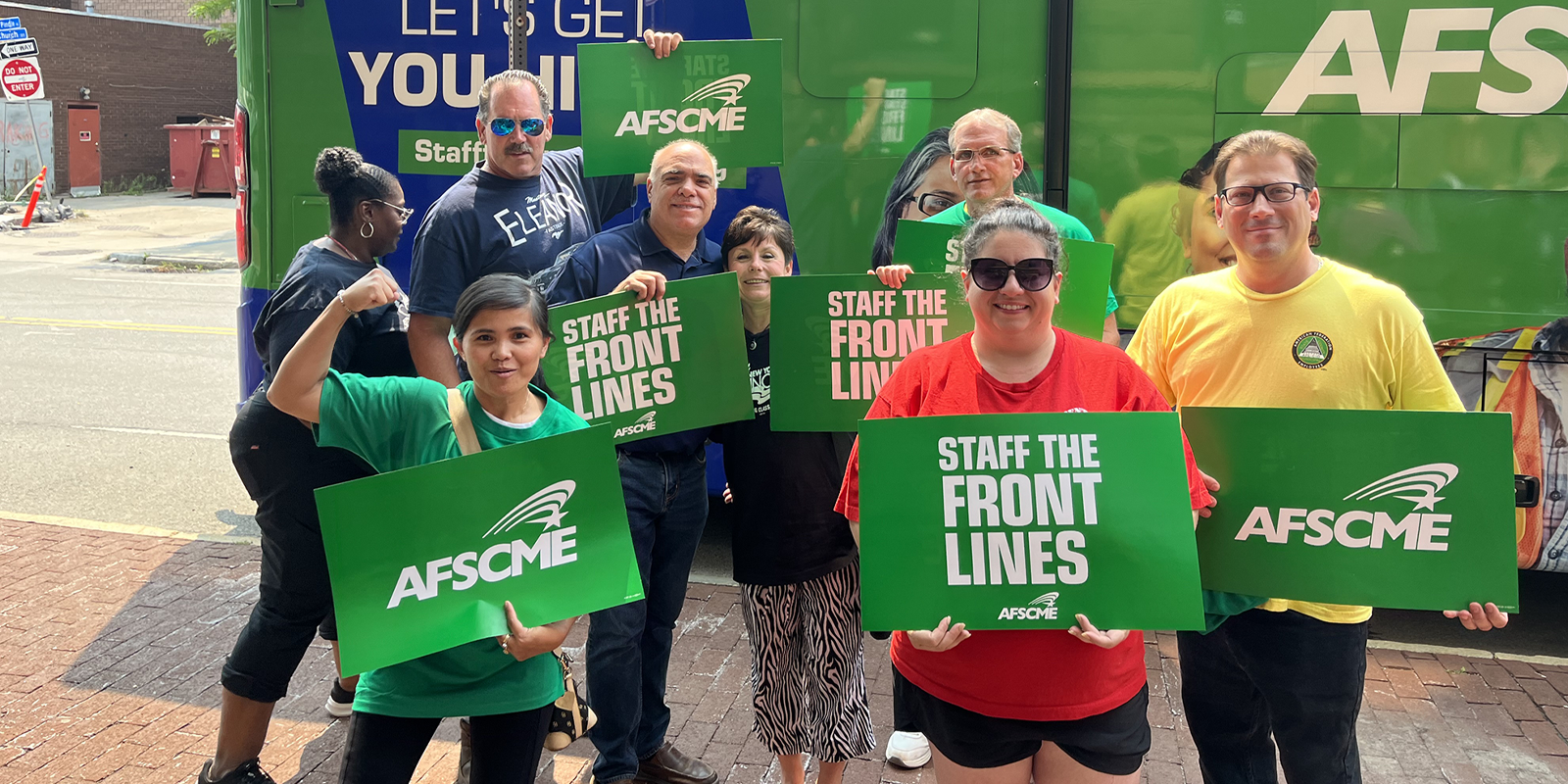The Friday jobs report from the U.S. Labor Department showed that private and public employers hired 150,000 workers in October, below the unexpectedly red-hot pace of September when employers hired nearly twice that number. The United Automobile Workers strikes against the Big Three accounted for 33,000 fewer jobs last month. Those jobs are expected to return now that UAW workers have won historic contracts with the Big Three automakers.
There were 21,000 more federal, state and local government jobs last month than in February 2020, according to AFSCME’s analysis of federal data. State and local government jobs are on pace to exceed their pre-pandemic peaks in December.
But the pace of hiring to fill those jobs remains sluggish. AFSCME’s research shows state and local governments were trying to fill 852,000 vacant positions in September 2023. However, those employers were able to hire only 325,000 workers, depriving many communities of vital public services.
This year, AFSCME launched the ambitious Staff the Front Lines initiative to resolve this growing crisis in public service employment in states and localities across the country. Not only are communities getting shortchanged by the staffing crisis, but public service workers are also shouldering impossible workloads, leaving them exhausted.
The initiative involved a Staff the Front Lines bus tour, which over the summer made stops in 17 cities and turned out more than 2,000 job seekers. Additional Staff the Front Lines efforts are underway.
Despite the public sector’s struggles to fill vacancies, wages grew more for government jobs than in the private sector in the last quarter, according to the Washington Post. And that helped AFSCME members like Edward Watson, a utilities technician for the city of Ontario, California, decide to stay in his job rather than look elsewhere.
Watson, vice president of AFSCME Local 3061 (District Council 36), told the Post pay hikes of 2%-3% a year weren’t keeping pace with the cost of living or allowing him to provide for his wife and three kids. And his job grew more stressful and demanding as many his co-workers kept retiring or quitting.
But over the summer, Watson and fellow union members negotiated a 27.5% raise for city workers over the next three years. Watson’s pay for this year jumped by 9.5% in July, enough to convince him to stay put and lure some of his co-workers back.
Now that he earns $36 an hour, Watson told the Post, “I’m able put a little more into savings. It helps at the grocery store. I think a lot of people have a lot more confidence now that they can stay in their jobs with the city.”
